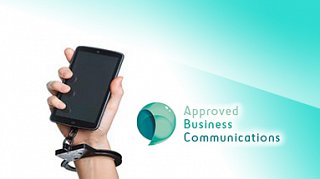Addicted to your smartphone? Your brain is getting affected

Researchers noted that young people’s addictions to smartphones and internet affect their balance of brain chemistry, influencing behaviour and mental health.
A recent Pew Research Center study found out that 46% of Americans recognised smartphones as key assets of their lives and that they could not live without them. While it may be seen an exaggeration, it is true that an increasing number of people are developing an addiction to smartphones and similar electronic devices, in form of information gathering, playing games, news searches and traditional phone calls.
The addiction goes hand in hand with a decrease in face-to-face interactions due to the excessive attention dedicated to the electronic devices, raising questions about the long term-effects on the brain of such addiction. A new study recently presented at the annual meeting of the Radiological Society of North America (RSNA) reflected to such issue. Hyung Suk Seo, M.D., professor of neuroradiology at Korea University in Seoul, South Korea, and colleagues used magnetic resonance spectroscopy (MRS) to explore the brains of smartphone- and internet-addicted teenagers. MRS is a type of MRI that measures the brain’s chemical composition.
The study involved 19 teenagers (mean age 15.5, 9 males) diagnosed with internet or smartphone addiction and 19 gender- and age-matched healthy controls. As part of the study, twelve of the addicted teenagers received nine weeks of cognitive behavioral therapy, modified from a cognitive therapy program for gaming addiction. The scientists used standardized internet and smartphone addiction tests to measure the degree of internet addiction. The test explored the extent to which internet and smartphone use affects daily routines, social life, productivity, sleeping patterns and feelings.
“The higher the score, the more severe the addiction,” Dr. Seo explained. Dr. Seo reported that the addicted teenagers had significantly higher scores in depression, anxiety, insomnia severity and impulsivity.
The researchers performed MRS exams on the addicted youth before and after the behavioral therapy and a single MRS study on the control patients to measure levels of gamma aminobutyric acid, or GABA, a neurotransmitter in the brain that inhibits or slows down brain signals, and glutamate-glutamine (Glx), a neurotransmitter that causes neurons to become more electrically excited.
Previous studies have found GABA to be involved in vision and motor control and the regulation of various brain functions, including anxiety.
The results of the MRS revealed that, compared to the healthy controls, the ratio of GABA to Glx was significantly increased in the anterior cingulate cortex of smartphone- and internet-addicted youth prior to therapy.
Dr. Seo explained the ratios of GABA:creatine and GABA:glutamate were significantly correlated to clinical scales of internet and smartphone addictions, depression and anxiety.
Having too much GABA can result in a number of side effects, including drowsiness and anxiety. Further research is required to understand the clinical implications of the findings, but Dr. Seo believes that increased GABA in the anterior cingulate gyrus in internet and smartphone addiction may be related to the functional loss of integration and regulation of processing in the cognitive and emotional neural network.
As positive finding consisted in the significant decrement or normalisation of GABA to Glx ratios in the addicted teenagers after cognitive behavioral therapy.
“The increased GABA levels and disrupted balance between GABA and glutamate in the anterior cingulate cortex may contribute to our understanding the pathophysiology of and treatment for addictions,” Dr. Seo explained.
Written by: Pietro Paolo Frigenti
Reference List: Aviad, H., Hadas, I., Lazarovits, A., Alyagon, U., Eliraz, D. and Zangen, A. (2017) “Answering the missed call: Initial exploration of cognitive and electrophysiological changes associated with smartphone use and abuse.” PLoS ONE. (DOI: 10.1371/journal.pone.0180094
Balconi, M., Campanella, S., and Finocchiaro. R. (2017). Web addiction in the brain: Cortical oscillations, autonomic activity, and behavioral measures. Journal of Behavioral Addictions. DOI: 10.1556/2006.6.2017.041
